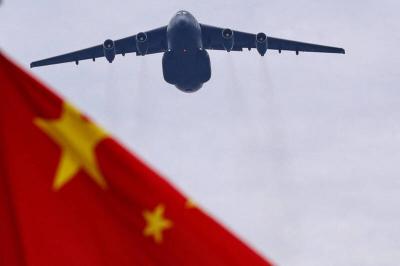Following the powerful earthquake and tsunami that struck northeast Japan on March 11 last year, a nuclear crisis further damaged the country, along with its tourism industry, while boosting the number of Japanese traveling to Taiwan.
Over the past year, the number of Taiwanese tourists visiting Japan shrank by 17.5 percent compared with 2010, yet Japanese tourism to Taiwan rose by 19.9 percent, or about 210,000 visitors, to 1.29 million travelers, Tourism Bureau statistics showed.
The statistics also showed that in the first half of last year, average daily expenditures per Japanese tourist in Taiwan reached US$354, a 30 percent increase from the same period in 2010. Both numbers shot to their highest in 56 years.
Japanese tourists’ expenditures were 1.48 times that of the average of overall tourists to Taiwan and 1.66 times that of Chinese tour group tourists.
Travel Agent Association of the Republic of China secretary--general Roget Hsu (許高慶) estimated that Japanese tourists to Taiwan generated NT$53 billion in foreign exchange revenue for the country last year, an increase of almost 50 percent.
Japan’s population is 5.5 times that of Taiwan, but for the first time in nine years, the number of Japanese tourists to Taiwan exceeded the number of Taiwanese visitors traveling to Japan last year, Hsu said.
He said that several reasons contributed to the change, including a drop in the number of Taiwanese travelers to Japan, the yen’s appreciation and the nation’s generous post-quake donations to Japan.
Tsai Ming-ling (蔡明玲), director of the Tourism Bureau’s planning and research division, said that after launching direct Taipei International Airport (Songshan airport)-Haneda flights in October 2010, the country had seen Japanese visitors to Taiwan increase by 17 percent in January last year from the same month in 2010, followed by a 45 percent rise in February last year.
Even with the occurrence of the earthquake in March last year, the number rose by 2 percent, Tsai said.
Following Taiwan’s strong show of support to the tragedy-hit country, which left a lasting impression on many Japanese, Tsai said total arrivals from Japan were up in August, September and December last year by 29 percent, 34 percent and 27 percent respectively.
She said that the nation’s post-quake assistance and care had received widespread media coverage in Japan and have brought about a rise in the number of Japanese tourists.
After the March 11 earthquake, Tsai said the bureau had withdrawn its tourism promotion in Japan and replaced it with images showing Taiwanese making post-quake donations to the earthquake-stricken country, as well as children from Taiwan writing consolation letters to its victims.
Aside from efforts by the Taiwanese authorities, the nation’s airline companies and travel agencies also joined hands to allow 1,000 earthquake victims from northeast Japan to visit — free of charge — Nantou County, which was most severely hit by the 921 Earthquake in 1999, to witness its reconstruction accomplishments from September to November last year.
The free tours were so well received by Japanese victims that the actual number of participants was 1.5 times higher than expected, with many saying the tours had given them hope during a desperate period, she said.
Sunrise Travel Service president Ko Mu-chou (柯牧洲) said the travel agency had seen a 25 percent increase in tour groups from Japan last year.
After the natural catastrophes and Taiwan’s strong support, Japan’s Ministry of Education, Culture, Sports, Science, and Technology said that high school students planning a study tour abroad should make Taiwan their top choice, while some Japanese corporations also chose Taiwan for their incentive tours, Ko said.
The upward trend was therefore expected to continue both this year and next year, he said.
Taiwanese tourism to Japan has trended downward since the earthquake, until in January, the number returned to normal with a 22 percent increase.
Commenting on the revival of Japan’s tourism industry, Tsai said that with resolution of the country’s mounting nuclear crisis, Japan would once again become the most favored destination for Taiwanese tourists.
This month, Japan extended Taiwan’s air rights over its territory, Tsai said. In light of this, China Airlines has proposed adding destinations including Kagoshima, Shizuoka and Toyama in Japan, with eight more destinations, including Osaka, likely being added to TransAsia Airways’ routes.
Taiwanese tourism to Japan is expected to peak during the cherry blossom season next month, she said.
In the past, tour groups from Japan generally centered their itineraries around food and accommodation, Tsai said, but the emphasis switched to shopping and entertainment after the March 11 earthquake.
Statistics for the first half of last year show that Japanese tour groups’ expenditures on shopping rose 14 percent and their entertainment spending surged 218 percent, which could likely stem from the yen’s appreciation and a desire to seize the day after the horrific catastrophe last year, Tsai said.
Based on a survey conducted by the bureau, the top five draws for Japanese tourists in Taiwan were local delicacies, beauty spots, the amiability of its people, the short flight and cheap prices, in that order.
Japanese tourists stay an average of 3.9 days, with their most frequently visited sites being night markets, the National Palace Museum, Taipei 101, Jiufen (九份) in New Taipei City (新北市) and National Sun Yat-sen Memorial Hall.
Translated by Stacy Hsu, Staff Writer

Beijing could eventually see a full amphibious invasion of Taiwan as the only "prudent" way to bring about unification, the US Department of Defense said in a newly released annual report to Congress. The Pentagon's "Annual Report to Congress: Military and Security Developments Involving the People's Republic of China 2025," was in many ways similar to last year’s report but reorganized the analysis of the options China has to take over Taiwan. Generally, according to the report, Chinese leaders view the People's Liberation Army's (PLA) capabilities for a Taiwan campaign as improving, but they remain uncertain about its readiness to successfully seize

HORROR STORIES: One victim recounted not realizing they had been stabbed and seeing people bleeding, while another recalled breaking down in tears after fleeing A man on Friday died after he tried to fight the knife-wielding suspect who went on a stabbing spree near two of Taipei’s busiest metro stations, Taipei Mayor Chiang Wan-an (蔣萬安) said. The 57-year-old man, identified by his family name, Yu (余), encountered the suspect at Exit M7 of Taipei Main Station and immediately tried to stop him, but was fatally wounded and later died, Chiang said, calling the incident “heartbreaking.” Yu’s family would receive at least NT$5 million (US$158,584) in compensation through the Taipei Rapid Transit Corp’s (TRTC) insurance coverage, he said after convening an emergency security response meeting yesterday morning. National

Taiwan has overtaken South Korea this year in per capita income for the first time in 23 years, IMF data showed. Per capita income is a nation’s GDP divided by the total population, used to compare average wealth levels across countries. Taiwan also beat Japan this year on per capita income, after surpassing it for the first time last year, US magazine Newsweek reported yesterday. Across Asia, Taiwan ranked fourth for per capita income at US$37,827 this year due to sustained economic growth, the report said. In the top three spots were Singapore, Macau and Hong Kong, it said. South

PLANNED: The suspect visited the crime scene before the killings, seeking information on how to access the roof, and had extensively researched a 2014 stabbing incident The suspect in a stabbing attack that killed three people and injured 11 in Taipei on Friday had planned the assault and set fires at other locations earlier in the day, law enforcement officials said yesterday. National Police Agency (NPA) Director-General Chang Jung-hsin (張榮興) said the suspect, a 27-year-old man named Chang Wen (張文), began the attacks at 3:40pm, first setting off smoke bombs on a road, damaging cars and motorbikes. Earlier, Chang Wen set fire to a rental room where he was staying on Gongyuan Road in Zhongzheng District (中正), Chang Jung-hsin said. The suspect later threw smoke grenades near two exits